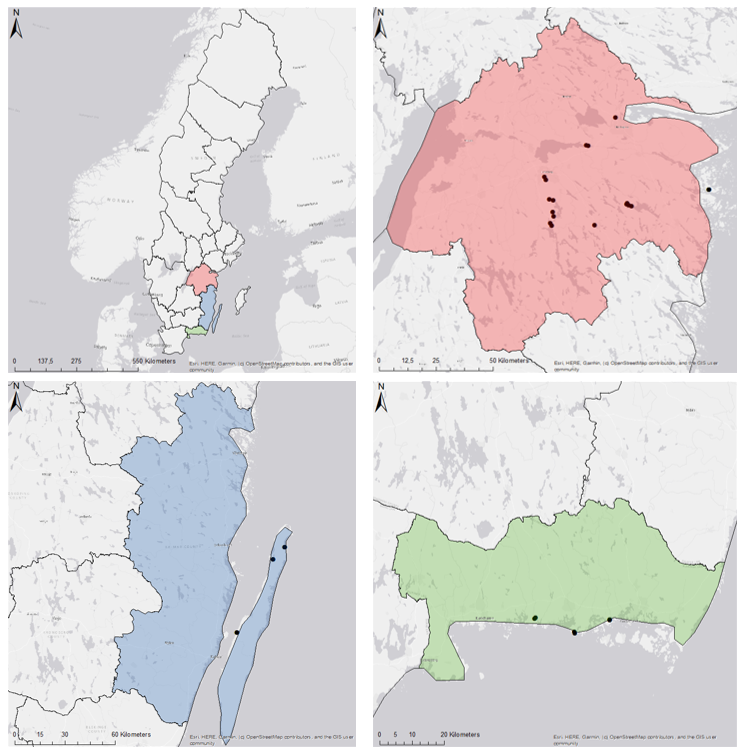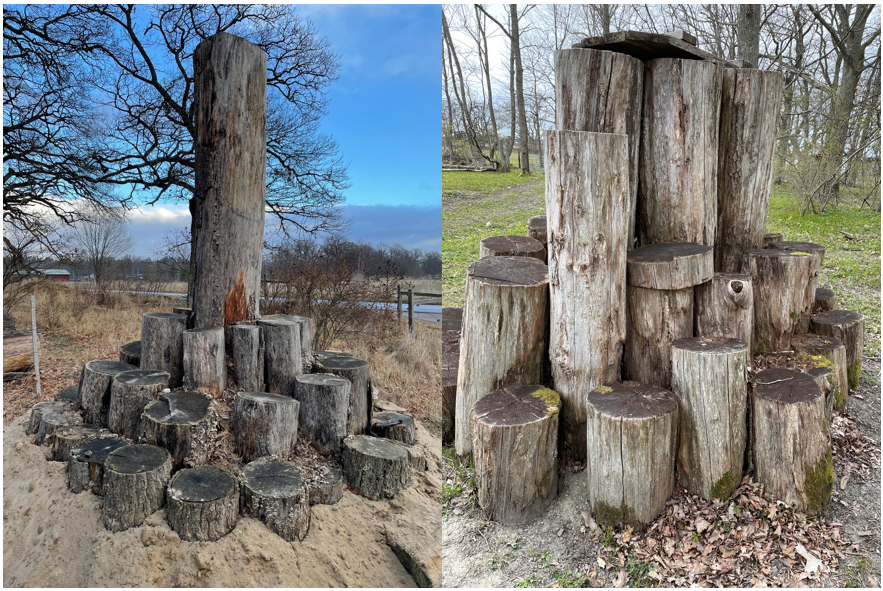Study sites
Beetles were collected in three different counties in south-eastern Sweden. In total, 31 log piles in 15 sites were studied (19, 6 and 6 log piles in the county of Östergötland, Kalmar and Blekinge, respectively). Out of the 15 sites, 14 sites were nature reserves that mainly contained deciduous trees in either forests or wooded pastures.

Log pile characteristics
Log piles were constructed by having multiple coarse logs, mainly oak, submerged in soil. The log piles had a material that partly covered them, which could either be mixed or solely made of sand, sawdust, or wood chips. However, some log piles, of both models, had no covering material. Log piles were of both new and older models, either 3 years old or approximately 10 years old. A difference between the two models was that new models had logs that were placed horizontally in the soil, which made them almost completely submerged, while older models only had logs that were standing vertically in the soil.

Sampling methods
Beetles associated with the log piles were collected using three sampling methods – eclector traps, sieve samples and pitfall traps. One log was taken from each log pile for the eclector trap in April, while sieve samples were taken twice from another log, once in April and once in June. Two pitfall traps were placed at each log pile, which were collected at three different occasions – May, June, and July.

Landscape and site factors
For each of the 31 log piles, the total amount of old trees, i.e. basal diameter equal to or greater than 60 cm, surrounding the log pile was calculated within five scales with differing radii: 100, 500, 1000, 2000 and 3000 m. Soil characteristics, whether log piles were situated in sand or clay, were identified using a method developed by Lund University and canopy openness was measured using hemispherical photographs of canopies above each log pile.
Statistical analyses
Species data from log piles were initially used in an analysis that focuses on species composition. Data was transformed in the statistical software R, and was afterward subjected to a multivariate analysis. Facultative saproxylic beetles and obligate saproxylic beetles were subjected to a constrained ordination called transformation-based redundancy analysis (tb-RDA). To analyse species richness between log piles and sites, a generalized linear mixed model using template model builder was conducted. Additionally, a logistic regression was used to estimate the probability of having stag beetles present.